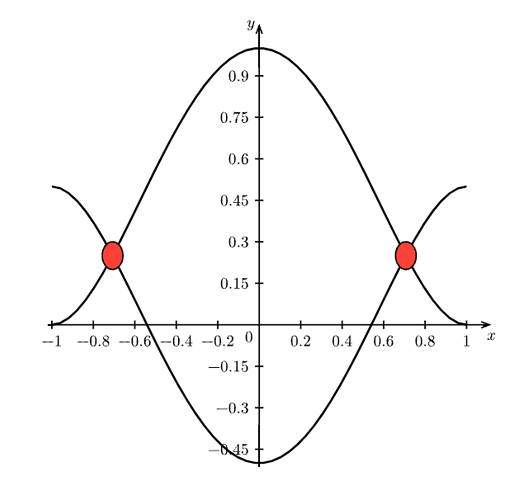I was trying different ways to calculate the intersection points from two cetz plots.
#canvas(
length: 1cm,
{
import draw: *
plot.plot(
size: (5, 5),
axis-style: "school-book",
x-label: [$x$],
y-label: [$y$],
{
intersections(
"i",
{
plot.add(
style: (stroke: black + 1.5pt),
domain: (-1, 1),
x => calc.pow(x, 4) - 2 * calc.pow(x, 2) + 1,
)
plot.add(
style: (stroke: black + 1.5pt),
domain: (-1, 1),
x => -(calc.pow(x, 4) - 2 * calc.pow(x, 2) + 1),
)
},
)
},
)
},
)
Is this even possible, or should i calculate the intersection points outside of typst/cetz?
